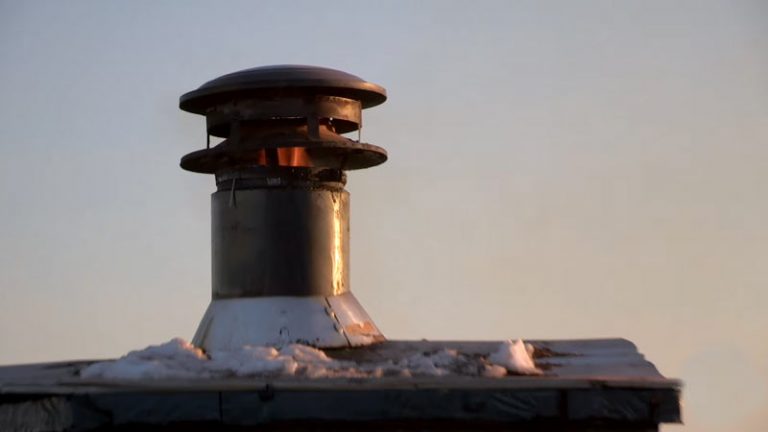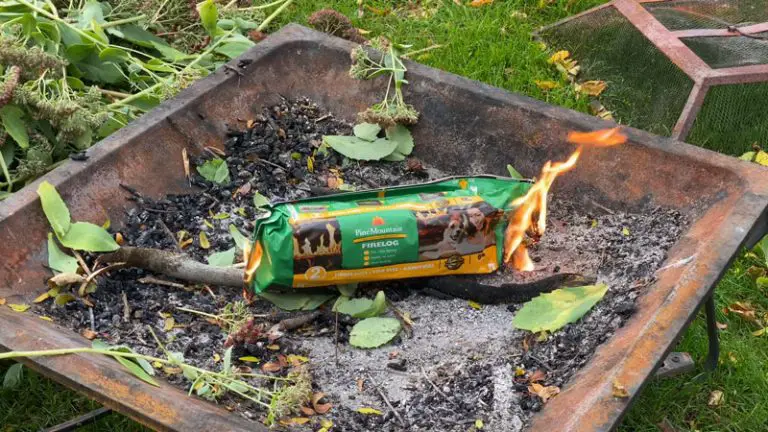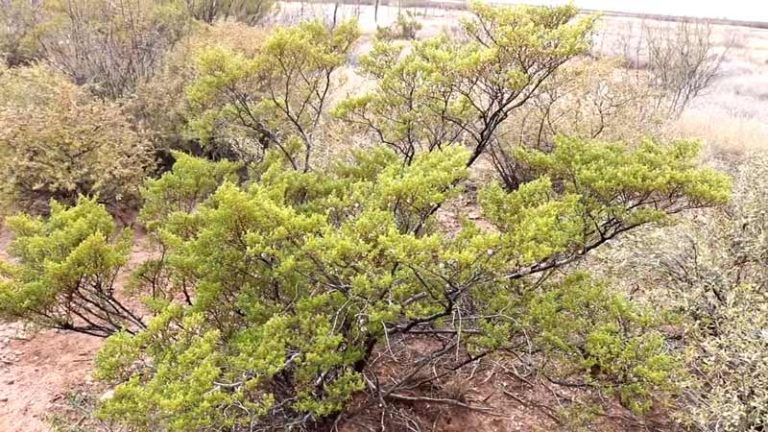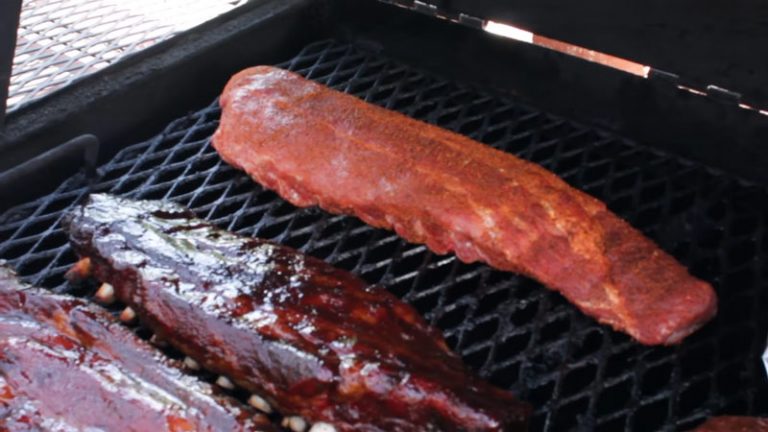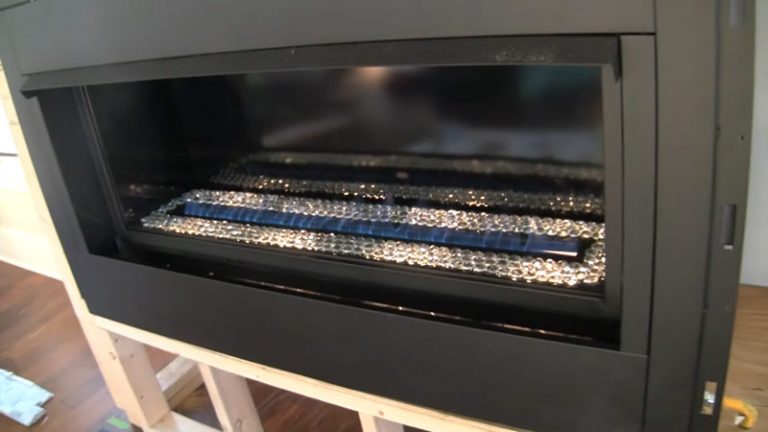Why Are My Gas Fireplace Logs Turning Black?
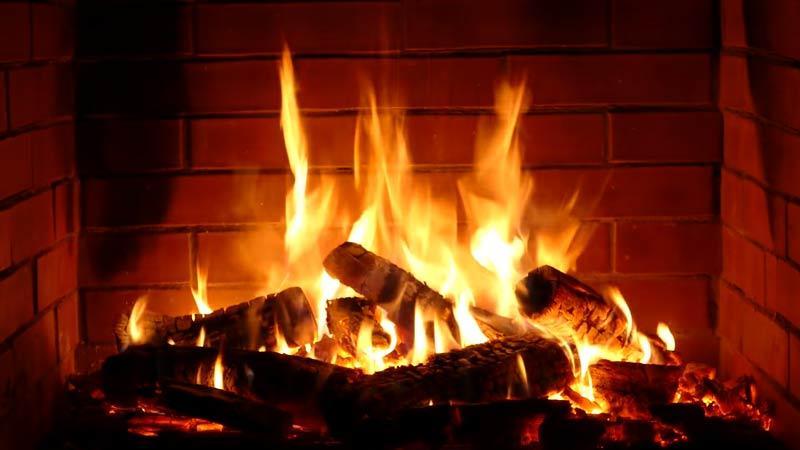
Keep your kitchen stove clean and free of soot buildup by regularly cleaning the burner ports. If you see evidence of a fire in your fireplace, take action immediately and clear any chimney of soot to prevent further damage.
Properly install firelogs before starting a afire; make sure they are placed in an open area away from flammable materials. In order to avoid Chimney fires. Be sure to check for ceramics or other objects that may have fallen down into the fireplace during the winter months.
You'll Learn About
Why Are My Gas Fireplace Logs Turning Black?
Clearing the burner ports of your stovetop can help prevent build-up and improve cooking performance. If you notice ceramic fire logs in the wrong place, it’s time to clean out that chimney.
Proper installation of fireplace logs is essential for a healthy fire – make sure you check with your local building inspector first. Keep your home safe by clearing away any soot buildup around the chimney on a regular basis.
Don’t forget about proper firelog installation when keeping your home safe in case of a blaze – get expert advice from an experienced contractor today.
Cleaning the Burner Ports
Clean the ports on your gas fireplace regularly to avoid blackening of the logs. Disconnect and clean the chimney if there is soot or debris buildup inside it.
Use a fireplace cleaner made specifically for burning wood, if needed. Avoid using harsh chemicals near your fireplaces; they can damage them over time. Always use caution when handling any type of open flame – gas or otherwise.
Checking for Ceramic Fire Logs in the Wrong Place
When your fireplace logs start to turn black, it may be a sign that the log set is in the wrong place. The black material on the logs could come from soot or creosote buildup over time if you’re using an open flame instead of a gas fireplace.
You can check to see if your logs are in the right location by looking at them from above. They should have some red and orange flames flickering when placed correctly on each side of the firebox opening. If all looks good and there’s still no heat coming out of your fireplace, it might be time to replace your log set altogether.
Clearing the Chimney of Soot buildup
Chimney soot buildup can cause your fireplace logs to turn black and emit an unpleasant odor. There are a few steps you can take to clear the chimney of soot and restore the performance of your fireplace.
A professional cleaning service may be necessary if the soot is extensive or has built up over time. By following these tips, you can prevent future chimney problems from occurring and enjoy clean fires again.
Make sure to store combustibles away from areas with potential for high heat exposure – like the fireplace area.
Proper Installation of Firelogs
Proper installation of firelogs is essential to ensure a long life for your fireplace. Follow the manufacturer’s instructions when installing logs in your gas fireplace.
Firelogs must be placed on an even surface, away from drafts and heat sources. Keep children and pets away from the area around the log while it burns as they may knock them over or start a fire.
If you notice black soot buildup on top of your logs, clean them immediately – this indicates that they are not burning correctly and need to be replaced.
Should gas fireplace logs turn black?
If you have a gas fireplace, it’s possible that the logs could turn black over time. This is due to the accumulation of soot and ash from the fire. If this happens, you can clean the logs by wiping them down with a cloth or sponge.
When you have a gas fireplace, the logs are going to produce smoke. This is normal and there’s nothing to worry about. The smoke from the logs will contain soot which will turn black over time. You can clean this soot off of your gas logs with a broom or by using a vacuum cleaner in the highest setting if needed.
If you live in an area where it frequently rains, be sure to clean your gas fireplace log vent regularly as water may get trapped inside and cause soot build-up on the vents. Soot on your gas fireplace logs is natural – it happens when wood burns properly and produces heat and light. Keep in mind that you should clean your vents regularly to prevent the buildup of soots over time. However, don’t stress too much about it – just enjoy those cozy fireplaces :).
In case something does go wrong with your gas fireplace (like a broken vent), don’t panic. You can still use it by opening up the flame damper carefully until things cool down enough for repair work to take place – then close it back up again once repairs are complete. And lastly… Don’t worry: even though soot accumulates on the exterior of Vented Gas Logs, they’re still safe to use.
What causes gas logs to turn black?
If you’re experiencing black soot on your gas logs, it’s likely due to the build-up of soot and ash. To prevent this from happening, make sure that all of your burner ports are clean and free of obstruction.
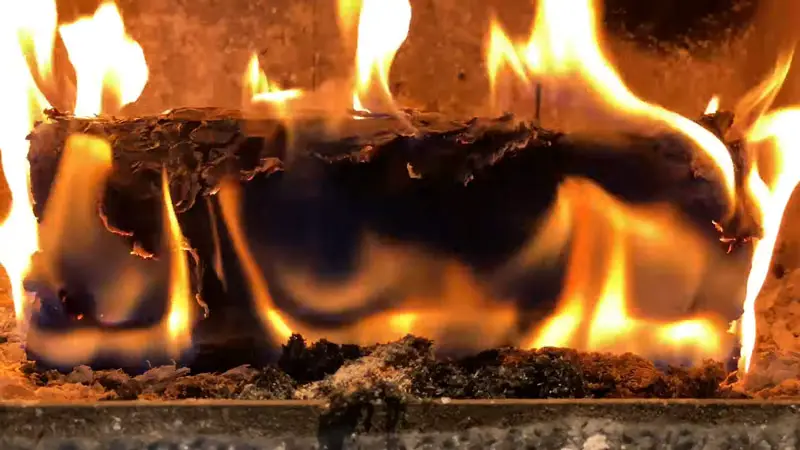
If the log is out of position, move until the flame path is clear. Adjusting the damper can also help to keep your logs burning cleanly and prevent the accumulation of sooty material on them over time.
How do you stop soot in a gas fireplace?
If you have a gas fireplace, it’s important to keep the soot in check. Soot is created when heat and flames interact, and it can cause significant damage to your firewood and fireplace.
There are several ways you can stop soot from building up in your fireplace: use an ash pan, install a chimney cap, or use an air purifier. One way to stop soot from accumulating in your gas fireplace is to clean out the air intake shutters.
This will allow fresh air into the unit, which will then restore the air-fuel ratio and help prevent soot build-up. 2. You can also try restoring the air-fuel ratio by adjusting the flame height and orientation. By doing this, you can make sure that all of the fuel is burning properly and eliminate any chances for carbon buildup or smoke production.
Finally, check for damaged or obstructed venting in order to ensure proper airflow throughout your fireplace unit. If there are any areas where smoke or heat cannot escape easily, it may be difficult for soot particles to dissipate – resulting in increased emissions levels over time.
Do gas fireplace logs need to be replaced?
Sometimes, the logs that are used in gas fireplaces can get worn out. Over time, the bark on the records can wear away and expose the wood below it. This leaves them more susceptible to catching fire, so you may want to replace them every few years.
Gas Log Sets Require No Daily Maintenance
If you are using a gas log set, there is no need to replace the logs every day. The logs will last for an estimated 10-12 years before they should be replaced, although it is recommended that you inspect them and replace them if they show any signs of wear or cracks or breaks.
Inspect Annual For Cracks & Breaks
If you notice any cracks or breaks in your gas fireplace logs, it is important to have them inspected as soon as possible by a professional technician. This will prevent potential fire hazards and ensure that your fireplace continues to function properly.
Replace If Not In Sound Condition
If your gas log set isn’t in sound condition, it’s best to have it replaced altogether rather than try to fix it yourself – this could result in further damage and may not even work correctly after being fixed.
Clean Fireplace As Necessary
It’s always important to clean out the ashes from your fireplace once a year; this will help keep your chimney clean and free from debris which can cause problems with your system later on down the line.
Check Fuellings & Damper Once A Year
You should check the fuel lines and the dampers once a year for any potential damage that may lead to a replacement.
Do gas logs need to be cleaned?
If you use a gas fireplace, it is important to keep the chimney clean and free of debris on a regular basis. It’s also important to inspect the fireplace for signs of damage or defects on a monthly basis.
You can purchase an annual maintenance kit to help with these tasks as well. Make sure all ventilation is clear so that smoke and heat do not build up in the Chimney.
Should a gas fireplace have soot?
If you have a gas fireplace, it’s important to keep an eye on the soot levels. Soot is created when heat and air combine in the fireplace. Over time, this soot can cause your home’s air conditioning system to work harder and may even lead to premature wear on your furnace or A/C unit.
Not Enough Air Flow
If the airflow into your gas fireplace is not sufficient, it will cause soot to build up in the firebox and on the flue. This problem can be caused by a damaged chimney or faulty ventilation system.
Chimney Damaged
A defective chimney can result in poor airflow into your gas fireplace, which will then cause soot to accumulate over time. A broken or cracked chimney may also allow smoke and heat to enter illegally, causing problems with your fireplace’s performance.
Congestion In The Firebox
If there is too much ash and cinders in the firebox, it can create congestion that prevents air from flowing freely through the burning material. This issue can be solved by emptying out the ashes & cinders periodically or replacing them with fresh fuel sources such as wood chips or briquettes.
Soot Blockage From Ash & Cinders
Soot accumulates over time when combustion occurs in an enclosed space like a gas fireplace; this accumulation causes blockages that prevent air from entering and circulating correctly around the firebox. To fix this issue, remove all of the ash & cinders regularly (at least once per month) using a Chimney Sweep tool or special vacuum cleaner designed for this purpose.
To Recap
If the logs in your gas fireplace are turning black, it might be time to replace them. The burning of these logs releases natural gas, which can cause a fire hazard if not properly ventilated. Replacing the log set will prevent this problem from occurring in the future.


